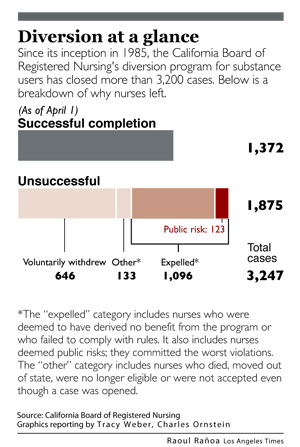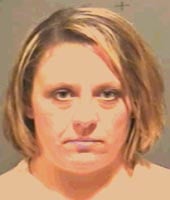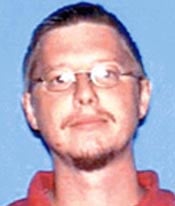
Photo used under a Creative Commons license by flickr user <a href="http://www.flickr.com/photos/erix/">erix!</a>
This story first appeared on the ProPublica website.
The morning of her second day at Starpoint Surgery Center in Studio City, nurse Melony Currier was found in the parking lot, passed out in her car.
Once roused, she was escorted to a drug-testing facility to provide a urine sample. In the restroom, she injected an anesthetic she had stolen from the surgery center, according to state records and a Starpoint official.
Currier, a participant in the state’s confidential recovery program for impaired nurses, had failed repeatedly—and spectacularly—at rehabilitation, the records show.
Over 4 1/2 years, she’d been discovered high in her car at a Hollywood hospital, stolen anesthetics at a San Gabriel Valley hospital, been convicted of burglary after taking more drugs from the same hospital and flunked a drug test.
 Yet it wasn’t until Currier shot up at the drug-testing facility in September 2006 that she was kicked out of the recovery program. Though her evaluators labeled her a “public risk,” the California Board of Registered Nursing didn’t impose discipline until 1 1/2 years later, leaving her free her to work without restriction in the interim, the documents show.
Yet it wasn’t until Currier shot up at the drug-testing facility in September 2006 that she was kicked out of the recovery program. Though her evaluators labeled her a “public risk,” the California Board of Registered Nursing didn’t impose discipline until 1 1/2 years later, leaving her free her to work without restriction in the interim, the documents show.
As the state begins overhauling regulation of California’s 350,000 registered nurses, one of the board’s most touted programs stands out as seriously troubled: drug diversion.
For years, nursing board officials have described diversion as a haven where good nurses can kick bad habits—without losing their licenses or their reputations.
But an investigation by ProPublica and the Los Angeles Times found participants who practiced while intoxicated, stole drugs from the bedridden and falsified records to cover their tracks.
Since its inception in 1985, more than half the nurses who have entered the program haven’t completed it. Some who fail at diversion are deemed so incorrigible that the board labels them “public safety threats” (sometimes referred to as “public risks”).
Based on a review of all nurses who faced disciplinary action since 2002, The Times and ProPublica identified more than 80 such nurses.

Dire as they sound, the labels do not trigger immediate action or public disclosure. Some nurses that the board considers dangerous continue to treat patients.
“These healthcare professionals may be in the operating room. They may be serving you when you’re sick,” said George A. Kenna, an addiction researcher at Brown University. “You just don’t want that sort of person who’s impaired” at the bedside.
Earlier this month, Gov. Arnold Schwarzenegger replaced most of the nursing board and demanded wholesale reform after The Times and ProPublica reported that it took more than three years on average to investigate and discipline nurses. The newly appointed board meets for the first time Sunday and Monday.
Confronted with reporters’ findings on the diversion program this week, State and Consumer Services Secretary Fred Aguiar answered nearly every question by saying the program was part of a “broken system.” Aguiar, whose agency oversees professional licensing, promised it would be on the new board’s agenda.
In a separate interview, Carol Stanford, who has directed the diversion program since 2006, vigorously defended it. She said reporters were focusing too heavily on nurses who failed and not enough on those “saved” by diversion.
“You can pick apart any program,” she said. “But what about the good? What about the other side of that story?”
Stanford said the program, which nearly 1,400 nurses have completed since 1985, had a graduation rate of 59% last year.
“Of course, nothing’s perfect,” she said. “We’re working on whatever issues might be going on.”
Diversion, embraced in various forms by many regulators, is intended to protect both professionals and the public.
Nurses enroll voluntarily, sometimes after a complaint, sometimes before they land in trouble. They agree to a host of conditions, such as submitting to random drug tests, seeking treatment and pledging not to work without permission.
In return, the board suspends the disciplinary process, keeping secret the nurses’ participation in the program. With an annual diversion budget of nearly $3 million, it relies on an outside contractor to run the program day to day.
Because the program is confidential, it is impossible to know how many enrollees relapse or harm patients. But a review of court and regulatory records filed since 2002, as well as interviews with diversion participants, regulators and experts, suggests that dozens of nurses haven’t upheld their end of the bargain. And oversight is broadly lacking.
Nurses must promise they won’t work until they’re sober, yet the board doesn’t confiscate their licenses, nor does it ensure that addicts have kept their word.
Some covertly get jobs and steal drugs. The board typically doesn’t find out until the nurse gets in trouble again.
Even after the program expels nurses and labels them public safety threats, the board takes a median 15 months to file a public accusation—the first warning to potential employers and patients of a nurse’s troubles. It takes 10 more months to impose discipline, based on the Times/ProPublica review of disciplinary records filed since 2002.

Labor and delivery nurse Tiffany Fahrni, who originally enrolled in the program after stealing and using painkillers, said she was kicked out and labeled a “public risk” in December 2005 because she had worked without permission. But the board didn’t file an accusation against her until January 2009.
During that time Fahrni logged at least two arrests on drug-related charges, though she says she did not work as a nurse.
“They terminate you. They say you’re a danger to public society . . . then it takes three more years for them to do anything,” she said.
The nursing board “should have been all over me like a hawk,” Fahrni said. “An addict—you got to watch them like a baby.”
Julianne D’Angelo Fellmeth, administrative director of the Center for Public Interest Law at the University of San Diego, said every “public risk” case should be pursued within five days.
Nurses “treat how many dozens of patients?” she said. With such delays, “the chance for harm to a patient is exponentially multiplied.”
Drug convictions
In retrospect, Melony Currier may not have been a good candidate for diversion.
She first landed in trouble on Nov. 8, 2001, when she was arrested for stealing Demerol from Providence St. Joseph Medical Center in Burbank. (She later told board investigators that she’d stolen drugs every day for months.)
Nearly two weeks after her arrest, while working at Planned Parenthood in Van Nuys, she was found collapsed in the bathroom, injecting herself with the general anesthetic propofol. Two days after that, she returned to Providence St. Joseph and stole more of the drug, board documents say.
She was later convicted of misdemeanor theft in the Van Nuys case and petty theft and drug possession in the Burbank case.
Currier, then known by the last name Dietrich, was allowed into diversion in February 2002. The program bars nurses who have been convicted of selling drugs or who have caused patient harm or death. Also rejected are those previously disciplined by the board for drug use or mental illness, and those previously kicked out of any diversion program.
None of this applied to Currier. When the program finally expelled her in 2006—after the five relapses—her case entered the clogged pipeline of ordinary complaints. There it was investigated outside public view.
A month after Currier was ejected, according to board documents, she went to Providence St. Joseph, where she’d been arrested five years earlier. Posing as an employee, she said she’d come to collect drugs for outpatient surgery.
When questioned, she “fled,” board records say, driving 10 miles to Verdugo Hills Hospital in Glendale. Again posing as an employee, she stole two cases of propofol, according to court and board records.
Two days later, on Oct. 18, 2006, Currier was arrested when she returned to Verdugo Hills for more.
The board filed a public accusation against Currier in March 2007—nearly 5 1/2 years after the agency first learned of her drug problems.
When the board settled the case in 2008, Currier’s license was suspended for a year and she was put on probation. As part of the settlement, she admitted the allegations.
Currier is now free to practice with restrictions. She has declined to comment on her case.
Asked about delays in cases like this, in which a nurse has been deemed a public risk, diversion manager Stanford said: “That nurse still has due process. . . . You cannot go after a registered nurse in this state for falling out of treatment.”
In some other states—Arizona, Texas, North Carolina and Ohio, for instance—nurses are booted from diversion much more quickly and disciplined sooner, according to interviews with regulators there.
“You can’t stay in the program after one relapse, even one,” said Julia George, executive director of the North Carolina Board of Nursing.
Leonard LaBella, Verdugo Hills Hospital’s chief executive, said he was dumbfounded that the California board had not moved against Currier sooner.
“They might be overwhelmed,” he said. “But this one, I think, might have floated to the top.”
Risky honor system
At the moment, the main person responsible for protecting the public from a drug-addicted nurse in California is the drug-addicted nurse. It’s a risky honor system.
Anette Ekelius, who landed in diversion for allegedly stealing drugs in April 2001, said she knew the rules—she couldn’t work without the board’s permission. She also knew there was nothing to stop her. “I thought, ‘This is good,’ ” she recalled. ” ‘I need to work. I need to pay my bills.’ “
Ekelius got an unauthorized job as a temporary nurse at Torrance Memorial Medical Center that September, according to court records. She later pleaded guilty to stealing Demerol on her first—also her last—day. The hospital reported her to the board, but she remained in diversion.
Months later she took another job without permission, she said in an interview. At Corona Regional Medical Center, she appeared high and was accused of leaving a critically ill patient unattended, board records say.
Two days later, in February 2002, she was kicked out of diversion. She got another job and stole drugs before the board filed an accusation against her. Her license was revoked in August 2004.
“I was a good nurse, but not when I was using, obviously,” said Ekelius, who said she is now sober.
Diversion manager Stanford said she doubted there were more than a handful of such cases but conceded she has no way of knowing for sure.
Doctors program
California regulators well know that diversion programs can fall dangerously short.
In recent years, audits of the state medical board’s program found that relapsing doctors weren’t always removed from practice, surprise drug tests often weren’t surprises and designated monitors sometimes left doctors unwatched.
The medical board closed the 27-year-old program last year.
At legislative hearings on the matter, nursing board officials insisted that their program did not have the same problems and was “very successful.”
But the board often defines success as completing the program. By that measure, it has lagged behind the medical board. Historically, about three-fourths of doctors who entered diversion finished it.
And the nursing board does not track nurses once they complete the program. Scott Bertrand, a Claremont nurse anesthetist, relapsed three months after graduating. In August 2005, he was caught injecting himself during a surgery with the painkiller fentanyl, which was intended for the patient. Afterward he admitted using opiates every workday for 10 to 12 weeks, according to his board disciplinary record.
Given a second chance at diversion, he was kicked out, according to his board record. Last year the board suspended his ability to work as a nurse anesthetist for one year and put him on probation.
Reached twice by telephone, Bertrand said he was busy and never called back.
The board almost certainly misses other cases like Bertrand’s, addiction experts said.
“I’d want to know what their relapse rate is,” said Dean Dabney, a criminal justice expert at Georgia State University, who has written about impaired practitioners. “That’s your true indicator.”
In this week’s interview, Stanford initially stuck to her overall assessment of her diversion program as “a success.”
Pressed on the flaws identified by reporters, however, she said officials were taking steps to “tighten it up.”
One change in process, she said, is a requirement similar to that in New York—in which new enrollees in diversion inactivate their licenses. Another would allow the state to investigate complaints even while nurses are in diversion, as the state of Washington does. A third would expedite legal action on cases in which nurses are considered “public safety threats.”
“You’re raking me over the coals,” Stanford said to reporters. “I’m trying to work with the program to enhance it.”
A fatal overdose
Chad Matheny’s newspaper obituary said he died unexpectedly at his Cathedral City home May 19, 2008.

Just 32, Matheny was described as a loving husband and father, a musician and singer, a dedicated nurse and caregiver. Left unsaid: Matheny’s death came after a years-long battle with drugs.
It was a fight the nursing board knew he was losing.
An autopsy found that he had died of an accidental overdose: of powerful painkillers, antidepressants and anti-anxiety drugs. Some of the drugs appeared to have been obtained by phoning prescriptions in under the name of the physician he worked for, the autopsy report said.
Matheny had been booted from the diversion program two years earlier, and the board had labeled him a public threat, saying he had a “complete lack of insight into addiction.” But, with disciplinary proceedings pending, he could still work—and score drugs. He died in bed, beside his wife.
Matheny’s mother, Gaytha Minor, said the nursing board failed her son. But she is a veteran nurse herself—and what most angers her is that the board didn’t step in to protect the public.
“How many patients suffered because of my son?”
















